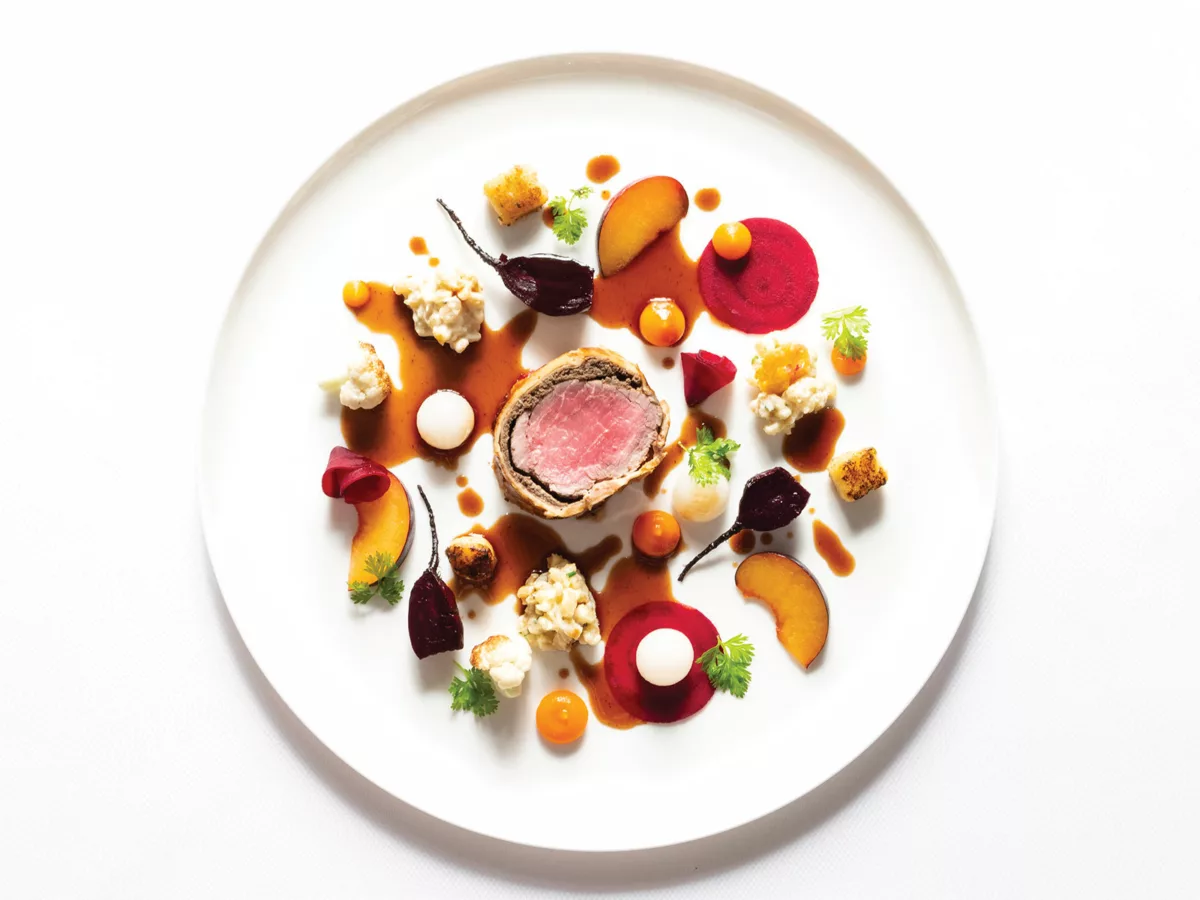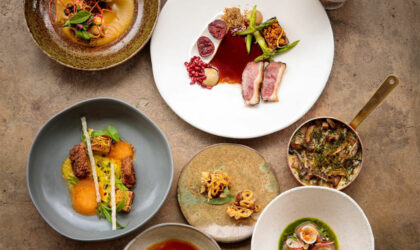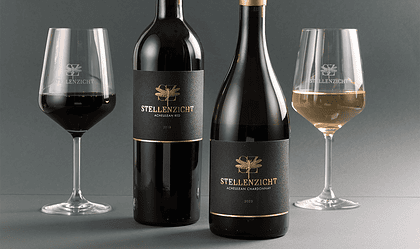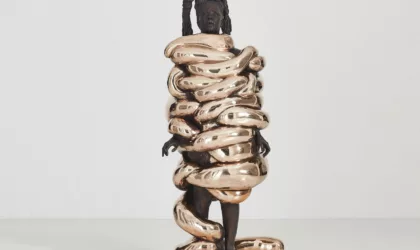‘It’s like stepping into the world of my favourite series, Peaky Blinders,’ says veteran chef Luke Dale Roberts of his latest venture, Salon, in Woodstock, Cape Town.
Like so many of his restaurants, from The Test Kitchen to The Shortmarket Club, Salon whisks you away, reorders your sense of place, disrupts time and flips reality.
‘It’s the transportation into another world with all those feelings you get when you watch a great movie. I want people to feel they’ve been transported back to the era of the 1920s and ’30s,’ says Dale Roberts.
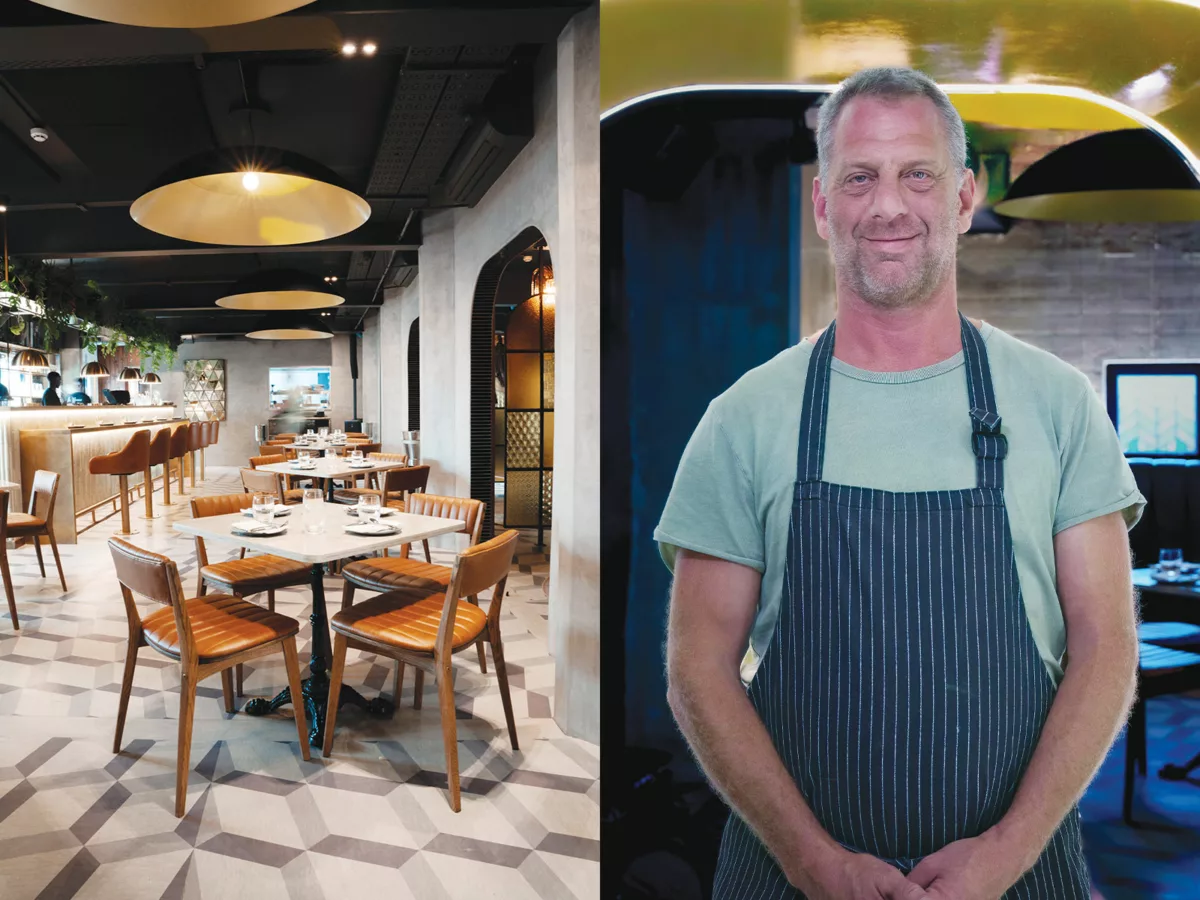
Salon opened not long after a furore consumed the culinary world when Copenhagen’s Noma, purportedly one of the world’s greatest restaurants, announced its imminent closure. Its media statement pronounced fine dining ‘unsustainable’. The announcement sent food writers into a frenzy; many declaring fine dining’s demise.
Of course, it begs the question: what even is ‘fine dining’?
‘It’s a term loosely thrown around,’ Dale Roberts says. ‘The food scene has evolved; the essence of fine dining is no longer about padded tables, perfectly starched tablecloths, waiters in bowties and that kind of thing – the fineness comes from our passion, from our belief in and dedication to quality.’
And there’s the notion of being moved – touched emotionally – by the entirety of the dining experience.
‘You are stepping into another world, with all the romance and intrigue of another era. A feeling of being somewhere different; a unique and beautiful space that complements the food and drinks we’re serving.’
Salon’s time-trip aesthetic was achieved by designer Maurice Paliaga. He incorporated rich golden hues and deep greens, velvet banquettes and Venetian plasterwork, Art Deco artworks, chandeliers, fringed vintage-style lamps and tinted, textured glass panels to create a stimulating, captivating environment.
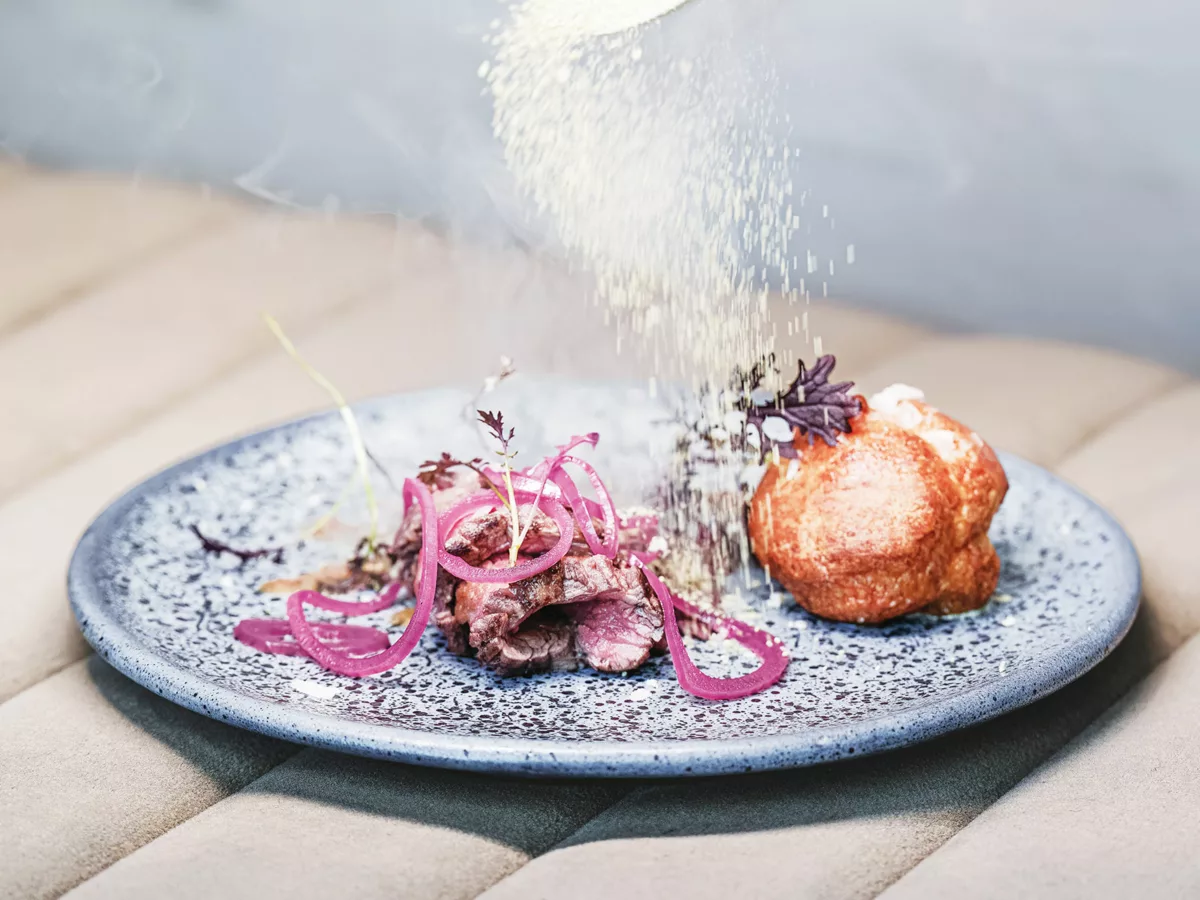
Food, meanwhile, is Dale Roberts’s career – thousands of hours in numerous kitchens – transformed into a menu that figuratively transports you around the world. There’s dishes inspired by formative food memories, paying homage to UK pub culture in the form of wafer-thin pork scratchings served with creamy Guinness dipping foam. Then there are dishes from the East: Singapore chilli langoustine, Malaysian laksa, Korean kalbi, fresh and fruity ‘tropica’ from the Philippines… each a memory of time as a hotel chef in Southeast Asia. South Africa, where he’s lived for almost two decades, has inspired a lavish rendition of the traditional ‘smiley’ – pork jowl accompanied by celeriac blue cheese cream. And malva pudding is reinvented using Jerusalem artichoke and served with amasi ice cream and coffee-flavour ‘ultramel’.
All in all, it’s a deeply personal multi-course summary of his culinary exploits around the world. The ‘fine dining’ part, he says, comes down to ‘where it transports you emotionally’.
At The Red Room, another restaurant that opened in Cape Town this year, diners are transported to an era of lavish dining at the Mount Nelson, where the hotel’s long-vacant Grill Room has been revived and transformed by the Chefs Warehouse group.
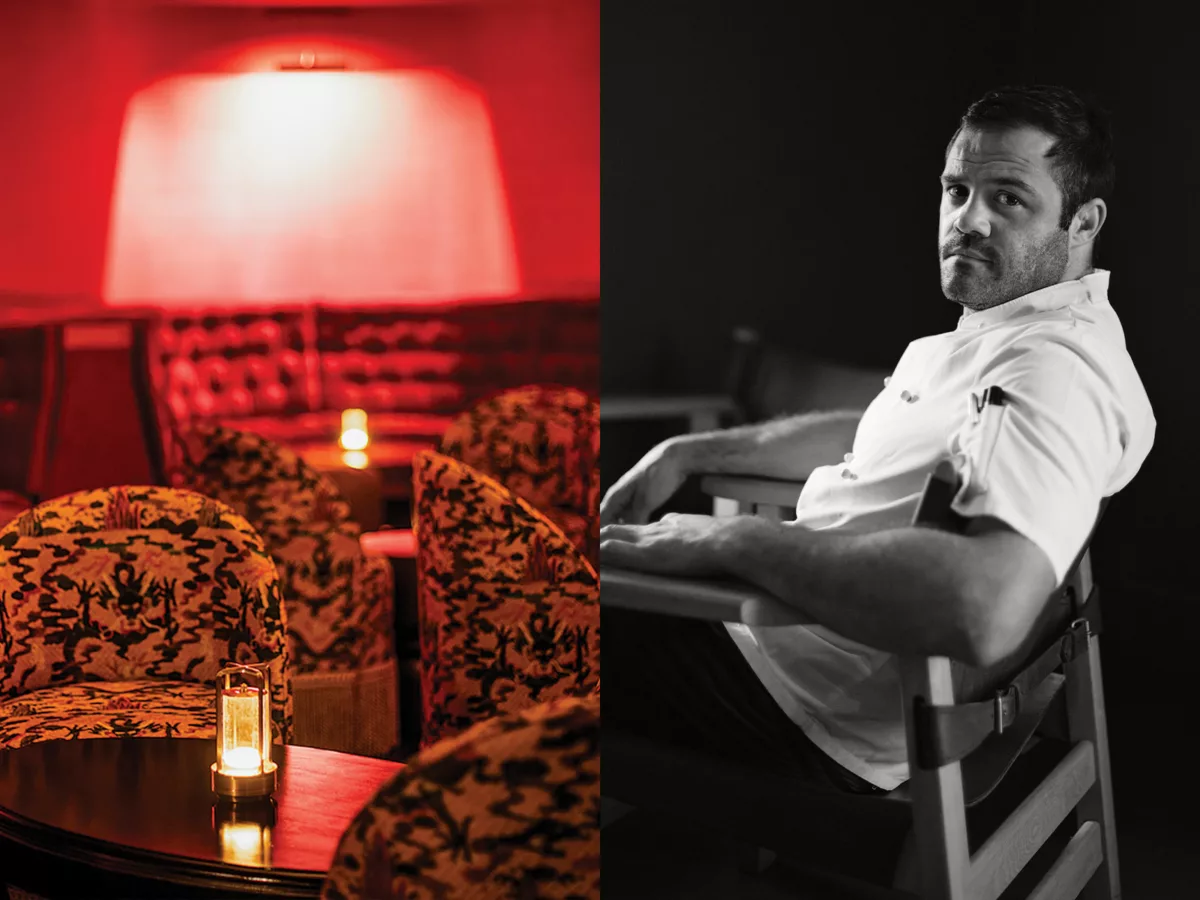
At the helm is David Schneider, a chef with wide experience, including time at The Test Kitchen and at several Chefs Warehouse outposts.
Too young to remember David Lynch’s groundbreaking TV series, Twin Peaks, in which the mysterious ‘Red Room’ was an extradimensional alternate reality, Schneider’s point of reference for the restaurant is more visceral: ‘It’s those old Chinese kung-fu movies but with a Tarantino feel – think of that scene in Kill Bill where Uma Thurman takes on the yakuza, an entire samurai army. It’s James Bond meets Tarantino.’
The moody colour scheme, the windowless underground location and the timeless atmosphere are complemented by artistic nods to the pan-Asian food that’s served, Schneider says.
‘We wanted the room to be a sort of guiding force with a specific tone. As soon as you go down those stairs you could be anywhere in the world, it could be night, it could be day, there’s definitely a transformative rabbit-hole element.’
The menu here reflects, Chefs Warehouse founder, Liam Tomlin’s love of Asian flavours, picked up during his many travels: Filipino-spiced squid and Korean BBQ beef steamed buns are served in the bar, and there’s a delectably good pork belly in Red Room’s own XO sauce.
‘Our Peking duck gets amazing feedback,’ says Schneider, ‘but I don’t consider our food to be the only star, it’s just one element in harmony with all the others, a layer within a rich narrative, part of a story we’re telling.’
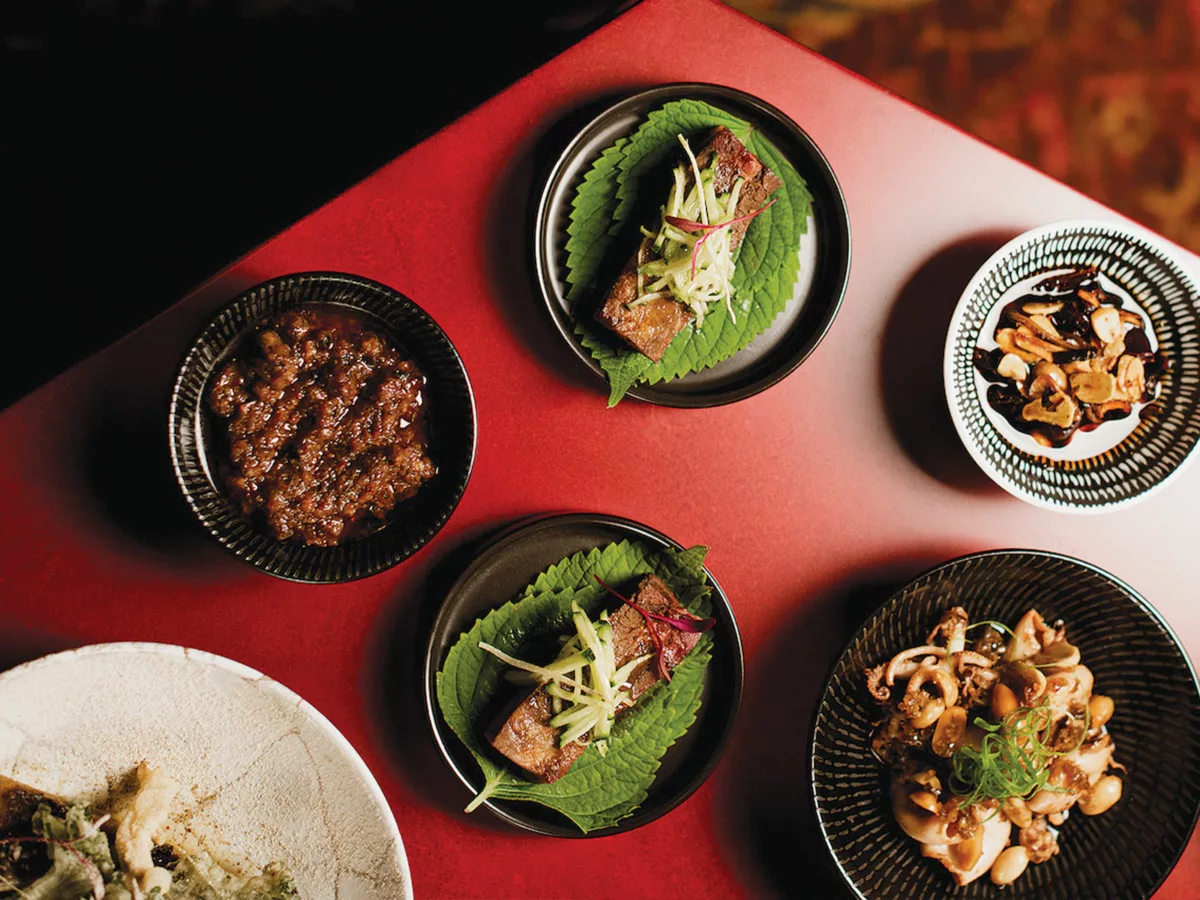
Schneider says a great restaurant is always evolving. ‘If it’s ever perfect and we’re completely happy with it, we would quit. Because there should always be the next step. And the next.’
What will hopefully remain, though, are the emotional highs of a classic night out. ‘I want it to be a fun restaurant, a cool place for special occasions, but also somewhere people meet up and let loose a bit, maybe get a little bit loud, even have a dance.’
Schneider calls it a ‘reimagining’. ‘Fine dining has gone into a cocoon, is being reborn. It’s not about Michelin-by-numbers or meeting a set of criteria. It’s about the philosophy, the intent. I would never tell anybody we’re a fine-dining restaurant. I’m not into labels. I want people to come down those stairs and decide for themselves. We’re more concerned about still being considered luxurious and timeless in 10 year’s time.’
Another chef who shares this gut-instinct for crafting a timeless, ethereal restaurant experience, is Jan Hendrik van der Westhuizen, the first South African to have created a restaurant that garnered a Michelin star – on the French Riviera.
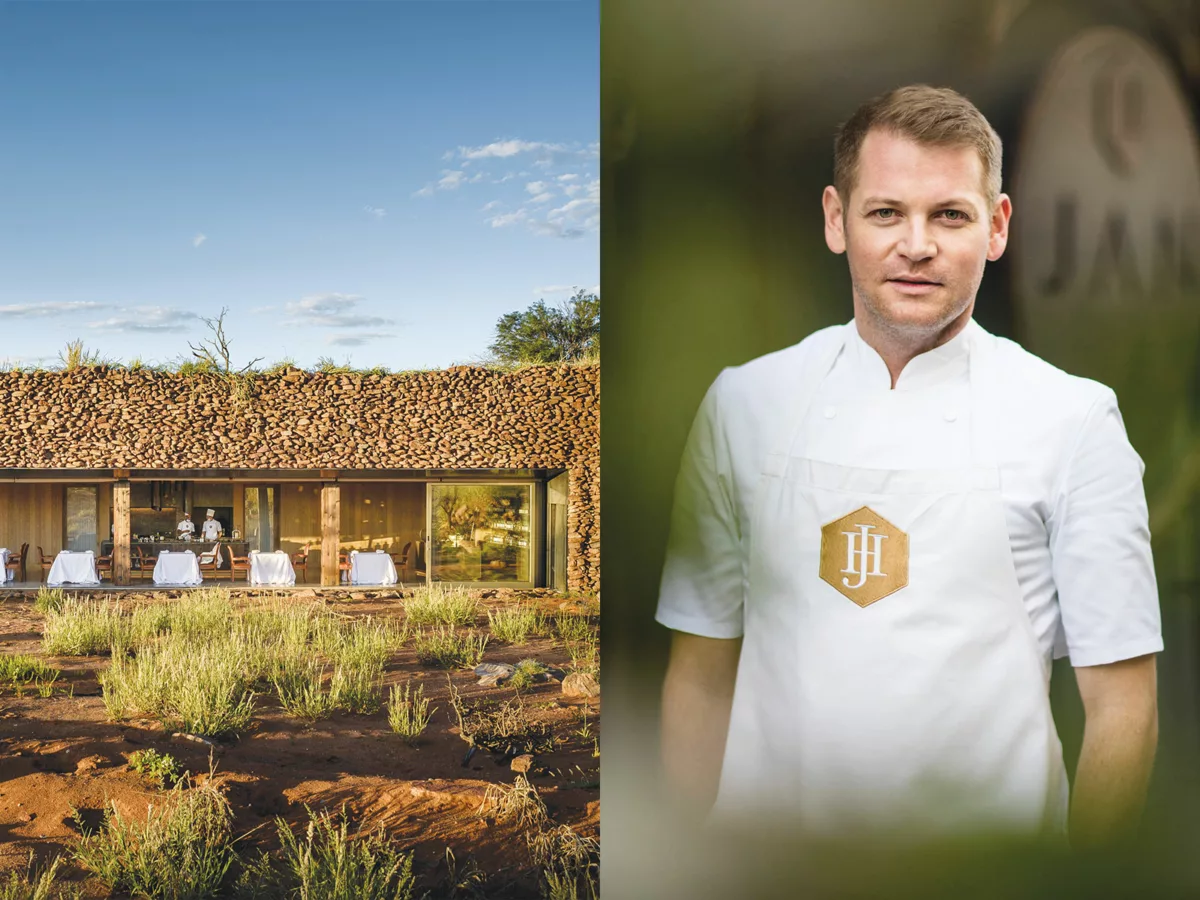
‘We are architects of pleasure,’ he says of the work that he and his ‘tribe’ do at the various Jan restaurant outposts. Apart from the original in Nice, there’s Klein Jan in the Kalahari, the Innovation Studio on Kloof Street in Cape Town, and now a pop-up experience in Franschhoek, in a little old farmhouse on a wine estate.
How his team creates pleasure is perhaps best expressed at the iconic Kalahari Klein Jan, where guests are transported into an alternate universe via a tiny 100-year-old farmhouse. It’s like being on a movie set, with alternating scenes for various food courses. First, a palate cleanser on the front porch, then into an antique farm kitchen where van der Westhuizen’s grandmother’s stove stands like a museum exhibit.
Then, through the back door, across a dusty courtyard where dishcloths are drying on a line, and into the guts of a wind pump where, as at The Red Room, you head down a stairway into a subterranean space. There, after passing through a cool-temperature cellar stocked with produce, you taste your way through a bread-and-butter course in a dedicated room, the baker in attendance.
And then it’s onto another stoep, where you’re, quite magically, no longer underground but gazing up at a starlit sky, a silhouetted fever tree looming nearby.
‘Spaces are really important to me. At all the restaurants we use the space to transport you to a new reality,’ says van der Westhuizen. ‘At Jan in France, you cross the road with a tannie walking with a dog in her pyjamas and you step into a version of my grandmother’s dining room filled with 91 plates of cheese. In Franschhoek, Jan is in a small house set in a huge lavender field, and it just takes you back. It’s not just four walls and some décor, it’s a personal story.’
The idea is to make you as a diner surrender, to let yourself get lost for a while, to time travel. He says that, immersed in these spaces, diners become receptive to new ideas, more willing to experience food that pushes boundaries, sometimes pushes a few buttons. In Nice, it’s created an opportunity to introduce pernickety Europeans to traditional South African recipes.
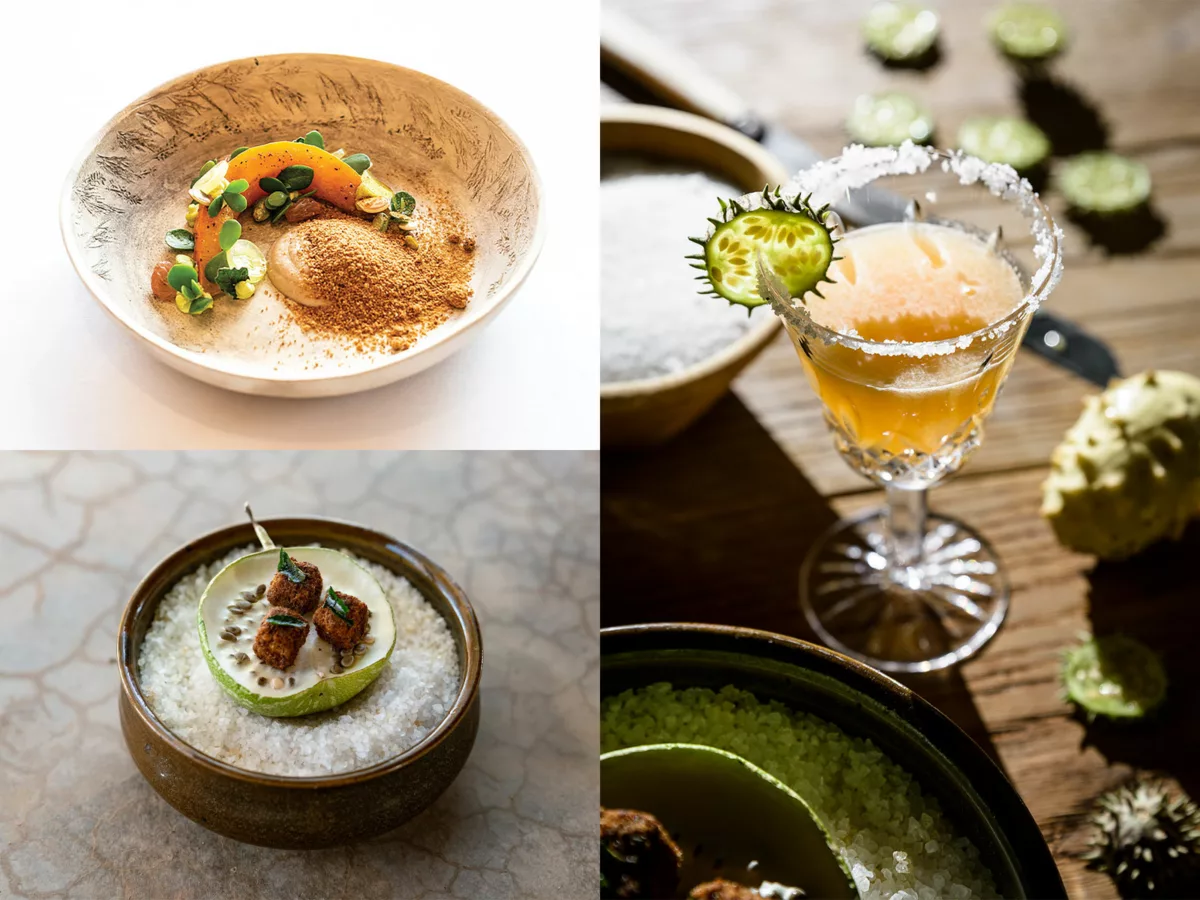
At Klein Jan, food does not pander to expectations nor is it guided by trends; instead, it is subject to the dictates of the season, the whims of climate, and the availability of produce and foraged ingredients within a strict 300km radius of the restaurant, which is a three-hour journey from the nearest decent supermarket. Some seriously strange Kalahari ingredients make an appearance, plus lots of game, and wines from unheralded Northern Cape cellars.
‘People have been saying fine dining will end since Marie Antoinette’s head came off,’ says van der Westhuizen of the furore around Noma’s closure. ‘But fine dining will never die. The important thing is to keep it relevant. And to keep reinventing – that’s where I think fine-dining’s cream is going to be scooped.’
by Keith Bain
